If you love baking as much as I do, you understand the joy of homemade bread. There’s nothing quite like the aroma and taste of a freshly baked loaf. And nothing worse than your bread going stale before you can eat it all. So how can you keep homemade bread fresh longer? In this article, let’s explore some tried-and-true methods to help you extend the shelf life of your bread. By following these steps, you can savor the deliciousness of your homemade bread for days to come. From proper cooling and storage to freezing and reheating techniques, I’ll share my best tips and tricks to keep your bread fresh and flavorful. So, let’s dive in and discover how you can preserve the goodness of your homemade bread and enjoy it to the fullest!
Affiliate Disclosure: Some of the links below are affiliate links, meaning at NO additional cost to you, I may earn a small commission if you click through and make a purchase.
How Can I Keep Homemade Bread Fresh Longer?
When it comes to preserving the freshness of homemade bread, there are several strategies that can be used to extend its shelf life. Proper cooling of the bread before storage is crucial to prevent moisture buildup, which can lead to mold growth or a soggy texture. Storing the bread in airtight containers or resealable bags helps maintain moisture and prevents drying out. It is recommended to store homemade bread at room temperature, as refrigeration can accelerate the staling process. Also, keeping the bread away from direct sunlight, heat sources, and excessive light helps preserve its quality. Slicing only what is needed and leaving the rest of the bread intact helps in maintaining its freshness. If unable to consume the bread within a few days, freezing is an effective method for long-term storage. By following these guidelines, individuals can enjoy the goodness of homemade bread for an extended period, making sure that every slice remains a delightful treat.
Storing Bread Correctly
When it comes to storing your homemade bread, there are certain things you can do to keep that bread fresh as long as you can. If you follow these steps, you may just extend the life of your bread.
- Before storing your homemade bread, make sure it has cooled to room temperature. This will help to prevent moisture buildup inside the storage container/bag. This moisture can lead to mold or a soggy texture. Nothing worse than soggy bread.
- Go for an airtight container or a resealable bag to store your bread. These containers provide a barrier against air, helping to preserve moisture and preventing the bread from drying out.
- If using a plastic bag, gently place the bread inside and squeeze out any excess air before sealing it. If using an airtight container, place the bread directly inside and close the lid tightly. Make sure that there are no openings or gaps that can allow air to enter.
- Homemade bread is best stored at room temperature. Refrigerating your homemade bread can speed up the staling process thus making the bread go stale faster. Find a cool, dry spot in your kitchen or pantry to store it.
- Keep your homemade bread away from direct sunlight as well as stovetops and ovens. The heat can cause the bread to dry out or become stale more quickly.
- Slice only what you need. Leaving the rest of the bread intact. This will help maintain its freshness.
- Try to eat it within a few days. Homemade bread does not have the preservatives that are in bread from the store so it has a shorter shelf life. If you cannot get it eaten that fast another great option is freezing it for longer-term storage.
Following these storage guidelines, you can extend the freshness of your homemade bread and enjoy it at its best for as long as possible.
As an Amazon Affiliate, I may earn a commission from qualifying purchases.
Bread Box

Bread boxes are specifically designed to keep bread fresh for longer. They create a controlled environment that will maintain moisture levels and prevent staleness. When choosing a bread box look for one made of wood or metal with ventilation features to allow for proper airflow. There are many styles to compliment your kitchen. Here are a few that may tickle your fancy.
Bread Bags
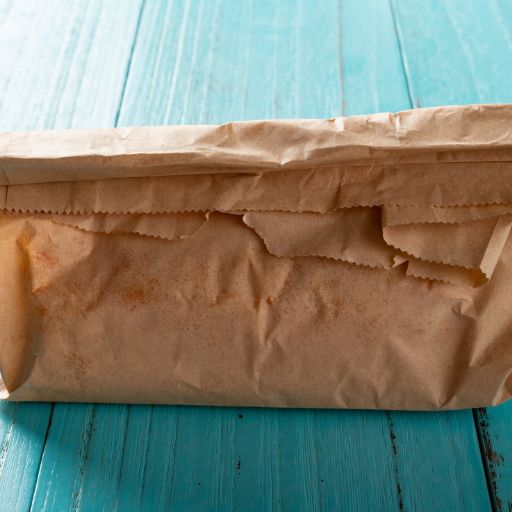
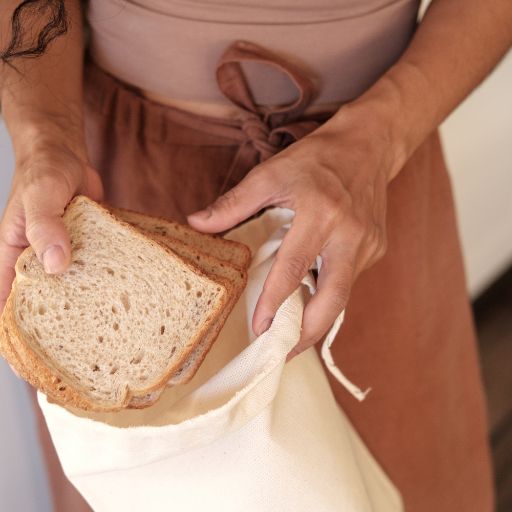
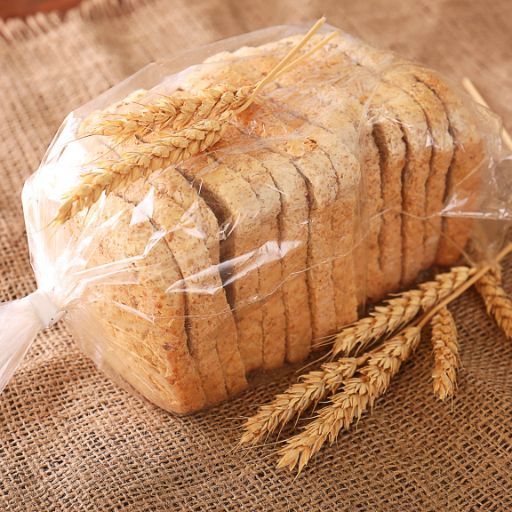
There are many types of bread bags to choose such as paper, cloth, or plastic. Each type has its advantages and considerations. Let’s take a closer look at each type, shall we?
Paper- These bags are a more breathable option and here are some things you need to take into consideration:
- Allows for some airflow which can help regulate moisture around the bread, reducing the likelihood of excess moisture buildup.
- Offer a degree of protection against dust, they may not provide the same level of barrier against air or contaminants as plastic bags.
- The breathable nature of paper bags can cause bread to dry out faster than when stored in plastic bags or airtight containers.
Some paper bag options to consider
Cloth- Often made of cotton or linen, provides a balance between breathability and some protection. Here are some things to keep these things in mind.
- Cloth bags allow for gentle airflow, helping to regulate moisture and prevent excessive drying or moisture buildup.
- Offers some protection from dust and debris but may not provide an airtight seal like plastic bags or containers.
- Similar to paper bags, the breathable nature of cloth bags may lead to quicker staling compared to an airtight storage option
Plastic- Plastic bags are a popular choice for storing because of their ability to provide an airtight seal, helping to maintain freshness.
- They effectively trap moisture helping to prevent your bread from drying out too quickly.
- Offers a protective barrier thus shielding your bread from air, dust, and other contaminants.
- Plastic bags do not allow air circulation causing the possibility of condensation forming inside the bag, which may affect the texture of the bread.
The choice between paper, cloth or plastic bags depends on exactly what you prefer and what works best for you. Plastic bags provide a high level of moisture retention and protection but may lead to condensation. Paper bags offer moderate breathability but may dry out bread faster and cloth bags provide a balance of airflow and protection. Whatever option you choose just make sure that your bread is completely cool before putting them into your bag of choice.
Freezing Your Bread
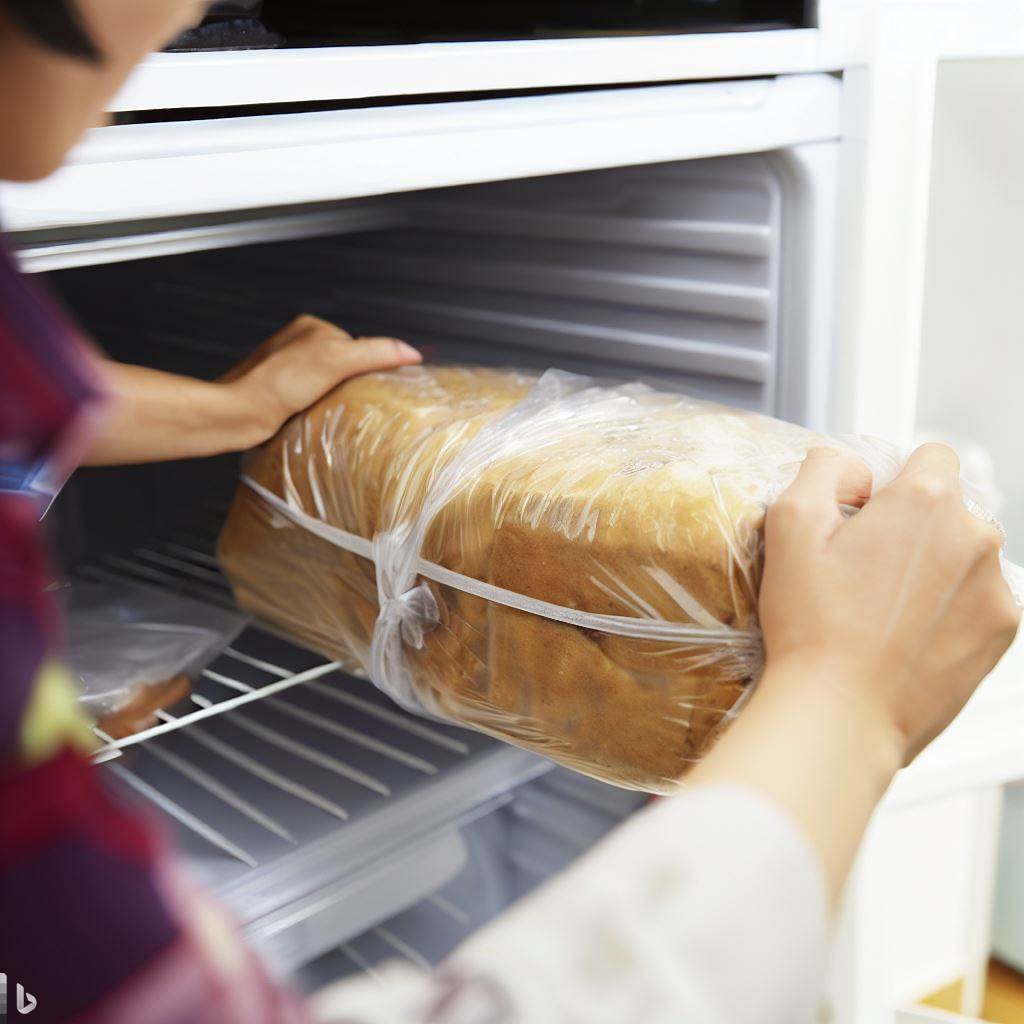
It is just me and my husband in our household so I always make more bread than we are able to eat before it goes stale. Most recipes make two loaves so I always have more than I need. So I either give one to a neighbor or freeze the extra loaf. Freezing is a great way for long-term storage that will help keep its freshness and taste. It also doesn’t hurt to know that you have some in the freezer when you crave some homemade bread. Really a win-win situation in my book. Here are a few tips to when it comes to freezing your homemade bread.
- Always make sure the bread has cooled completely. This helps retain moisture and will prevent condensation from forming inside the packaging of your choosing.
- You can either slice or leave the loaf whole. Personally, I slice the bread first as this allows me to grab just what I need. It takes a little more work but really ends up easier in the long run.
- Wrap the whole loaf or individual slices tightly in plastic wrap or aluminum foil. Make sure there are no gaps or exposed areas. I like to double-wrap for extra protection. After wrapping it with plastic wrap or foil, I then place it in a resealable freezer bag. Always make sure that you squeeze out any extra air in the bag.
- Label and date. Your bread should not be frozen longer than 3-4 months.
To thaw individual slices, let them defrost at room temperature for a few hours until soft. A whole loaf should be placed in the refrigerator to thaw out overnight. This slower thawing helps to retain moisture and will prevent the bread from becoming dry. If you like, you can warm the bread in a preheated oven or toaster for just a few minutes. This will refresh the texture and bring back some of the freshly baked qualities.
A thing to remember, when freezing bread the moisture in the bread may change and result in a denser or slightly drier texture. But if you wrapped it well, this will help to minimize these things. Therefore allowing you to enjoy your bread with little compromise to its quality.
Reheating

Reheating your homemade bread is a great way to help restore that freshness and great texture. And many ways to do it. Here are a few
Oven- preheat to around 350 degrees. Wrap with aluminum foil or place in a covered oven-safe dish. The time to reheat may vary depending on the size of your slices or loaf. But 10 to 15 minutes should do it. But make sure that you keep an eye on it, don’t want to overcook it.
Toaster or toaster oven- Slice your bread to the thickness you want and toast on a medium setting. You may have to play with the toasting time depending on how crisp you want your bread. Again keep an eye on it to avoid burning it.
And my favorite- Steaming- Lightly wet a clean cloth or paper towel. You just want to moisten it. Squeeze out any excess moisture. Wrap the bread with a damp cloth or paper towel and place it in a microwave-safe dish and heat at 50% for 5-10 seconds until it is just the way you want it.
When reheating your bread, it is important to avoid overheating. This can lead to dryness or excessive toasting.
Recycle
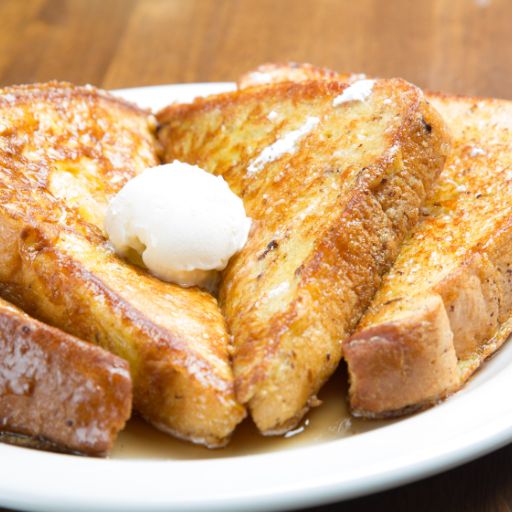

If by chance your bread has gone stale, DON’T THROW IT AWAY! You can recycle that stale bread and give it new life and enjoy it in different ways such as french toast, grilled cheese sandwiches, bread crumbs, bread pudding, and my favorite- croutons.
I love taking my stale bread and cutting it into small cubes and placing them on a baking sheet and baking in a 350-degree oven until they are toasted and golden. I then let them cool completely and then place them in a resealable freezer bag and place them in the freezer. I use them mostly for stuffing. I get a craving for stuffing other than at Thanksgiving and it is hard to find bread cubes at any other time in the grocery store. This way I don’t have to worry about that. I’ve got them in my freezer for when I want them.
Final Thoughts
There is nothing like homemade bread and with the right storage methods, you can preserve its freshness and enjoy it for an extended period. Whether you choose bread boxes, airtight containers, or different types of bread bags, each option has advantages and considerations to keep your bread at its best. Freezing is an excellent long-term storage solution, allowing you to enjoy homemade bread whenever you desire. Reheating techniques, such as using an oven, toaster, or steaming, can bring back the freshness and texture of your bread. And if your bread does go stale, don’t let it go to waste. Recycling stale bread into delicious dishes like French toast, bread crumbs, or croutons gives it new life. By using these storage and recycling tips, you can enjoy the goodness of homemade bread for longer, turning every slice into a wonderful treat.
This a great bread recipe I think you will enjoy
I hope this article was helpful in your bread-making adventure. Please leave me a comment below
And As Always
Keep On Baking!
Taianne
Share The Love

I’m Taianne, the owner and operator behind We Are Baking. Baking my first cake at age 11 hooked me on creating sweet treats. Though my interest faded during childhood, it was rekindled when I married my apple pie-loving husband. I love trying new recipes, tweaking classics, and helping others learn the science and art of baking. I started We Are Baking to share tips, tricks, and favorite recipes I’ve discovered over the years. When not in the kitchen, I enjoy spending time with family and friends. My goal is to inspire others to embrace their creativity through baking. Feel free to contact me with any questions!
Taianne@wearebaking.com

